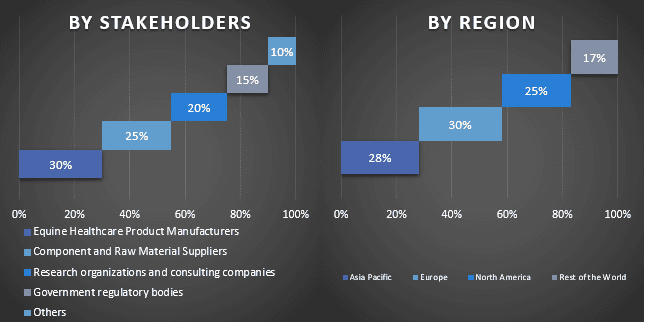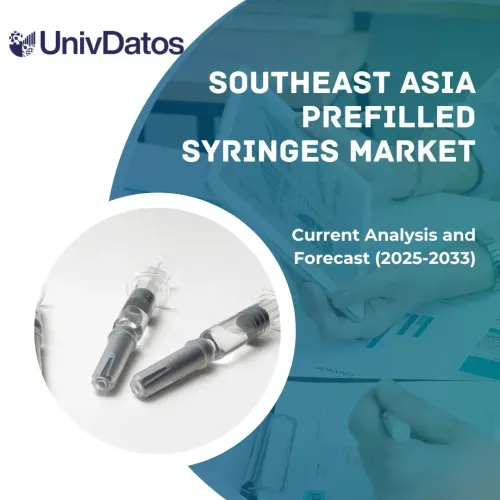- Home
- About Us
- Industry
- Services
- Reading
- Contact Us
Equine Healthcare Market: Current Analysis and Forecast (2022-2028)
Emphasis on Product (Drug, Vaccines, Medicinal Feed Additives, Diagnostics, Others); Application (Parasite Control, Influenza, Tetanus, West Nile Virus, Equine Infectious Anemia, Equine Herpes Virus, Other diseases); Distribution Channel (Veterinary Hospitals and Clinics and Retail pharmacies and Drug Stores); and Region/Country

The equine healthcare market is expected to register a CAGR of approx. 5% over the period of 2022-2028. Equine health is an important aspect of a horse’s overall well-being. Maintaining racehorse health is critical because proper management can reduce the occurrence of many disease conditions. As horses interact with their surroundings, they rely on health concerns to maintain proper performance and stability. Understanding the health of the horse can aid in its overall well-being. Routine veterinary care for vaccinations, parasite control, dental care; grooming and hoof care; and protection are all part of horse care. The growing demand for equine healthcare can be attributed to the increasing prevalence of the equine disease across the globe. For instance, according to CDC, in 2021, Eastern equine encephalitis virus disease (Neuroinvasive disease) cases rise from 6 in 2018 to 38 in 2019 and also increase deaths from 1 in 2018 to 19 in 2019. Owing to the glaring statistics, the increasing number of horses suffering from diseases is leading to the growing demand for equine healthcare and would contribute to the growth of the market in the forthcoming period as well. Furthermore, the equine healthcare market is anticipated to grow on account of the increase in animal healthcare spending and the rise in the advancement of equine healthcare products. However, one of the major factors which restricted market growth (during the COVID pandemic) is rising unemployment rates, as, the lockdown measures led to equine welfare crisis concerns all over the world. However, the situation has improved post-COVID, and the market is anticipated to show promising growth in the coming years.
Merck & Co., Inc, Zoetis, Boehringer Ingelheim International GmbH, Ceva Santé Animale, Hallmarq Veterinary Imaging, ESAOTE SPA, Vetoquinol S.A, Thermo Fisher Scientific Inc., Bayer AG, Elanco are some of the key players in the market. Several M&As along with partnerships have been undertaken by these players to facilitate customers with hi-tech and innovative products/technologies.
Insights Presented in the Report
“Amongst product, the drug category accounted for the significant share in the market in 2020”
Based on the product, the equine healthcare market is segmented into drugs, vaccines, medicinal feed additives, diagnostics, and others. The drug segment accounted for a significant market share in 2020 and it is estimated that it will grow rapidly during the projected timeframe owing to a surge in awareness toward effective & advanced drugs and vaccines, and a rise in number of cases of equine diseases.
“Amongst application, the parasite control category is expected to witness considerable CAGR during the forecast period”
Based on the application, the market is fragmented into parasite control, influenza, tetanus, west Nile virus, equine infectious anemia, equine herpes virus, and others. The parasite control segment grabbed a considerable market share and is expected to grow at a significant CAGR during the forecast period. There are numerous ways to administer parasiticides, including sprays, collars, oral solutions, gels, and spot-on treatments. Ectoparasiticides are used to treat external parasites, while endoparasiticides treat internal parasites. They are also suitable for use topically, orally, or intravenously.
“Amongst distribution channel, the veterinary hospitals and clinics category is expected to witness considerable CAGR during the forecast period”
Based on the distribution channel, the market is fragmented into veterinary hospitals and clinics, retail pharmacies, and drug stores. The veterinary hospitals and clinics segment grabbed a considerable market share and is expected to grow at a significant CAGR during the forecast period. increase in the number of veterinary hospitals, clinics, and veterinarians due to an increase in equine diseases and the equine population is likely to aid the segment growth.
“North America to witness significant growth during the forecast period”
For a better understanding of the market dynamics of the equine healthcare market, a detailed analysis was conducted for different regions across the globe including North America (the U.S, Canada, and the Rest of North America), Europe (Germany, France, Spain, United Kingdom, Italy, and Rest of Europe), Asia-Pacific (China, India, Australia, Japan, and Rest of APAC), Rest of World has been conducted. North America constitutes a major market for the equine healthcare industry owing to the ease of availability of the products and services across developing countries, the rise in animal health expenditure, and the increase in the population of equine. For instance, according to the FAO, there were around 10.56 million horses in the U.S. in 2021, and about 10.96 million horses in the North American region.
Reasons to buy this report:
- The study includes market sizing and forecasting analysis validated by authenticated key industry experts.
- The report presents a quick review of overall industry performance at one glance.
- The report covers an in-depth analysis of prominent industry peers with a primary focus on key business financials, product portfolio, expansion strategies, and recent developments.
- Detailed examination of drivers, restraints, key trends, and opportunities prevailing in the industry.
- The study comprehensively covers the market across different segments.
- Deep dive regional level analysis of the industry.
Customization Options:
The global equine healthcare market can further be customized as per the requirement or any other market segment. Besides this, UMI understands that you may have your own business needs, hence feel free to connect with us to get a report that completely suits your requirements.
Table of Content
Research Methodology for the Global Equine Healthcare Market Analysis (2022-2028)
Analyzing the historical market, estimation of the current market, and forecasting the future market of the global equine healthcare market were the three major steps undertaken to create and analyze the adoption of femoral prostheses in major regions globally. Exhaustive secondary research was conducted to collect the historical market numbers and estimate the current market size. Secondly, to validate these insights, numerous findings and assumptions were taken into consideration. Moreover, exhaustive primary interviews were also conducted, with industry experts across the value chain of the global equine healthcare market. Post assumption and validation of market numbers through primary interviews, we employed a top-down/bottom-up approach to forecasting the complete market size. Thereafter, market breakdown and data triangulation methods were adopted to estimate and analyze the market size of segments and sub-segments to the industry pertains to. Detailed methodology is explained below:
Analysis of Historical Market Size
Step 1: In-Depth Study of Secondary Sources:
Detail secondary study was conducted to obtain the historical market size of the equine healthcare market through company internal sources such as annual reports & financial statements, performance presentations, press releases, etc., and external sources including journals, news & articles, government publications, competitor publications, sector reports, third-party database, and other credible publications.
Step 2: Market Segmentation:
After obtaining the historical market size of the equine healthcare market, we conducted a detailed secondary analysis to gather historical market insights and share for different segments & sub-segments for major regions. Major segments included in the report as the product, application, and distribution channel. Further country-level analyses were conducted to evaluate the overall adoption of testing models in that region.
Step 3: Factor Analysis:
After acquiring the historical market size of different segments and sub-segments, we conducted a detailed factor analysis to estimate the current market size of the equine healthcare market. Further, we conducted factor analysis using dependent and independent variables such as an increasing equine population, etc. globally. A thorough analysis was conducted for demand and supply-side scenarios considering top partnerships, mergers and acquisitions, business expansion, and product launches in the equine healthcare market sector across the globe.
Current Market Size Estimate & Forecast
Current Market Sizing: Based on actionable insights from the above 3 steps, we arrived at the current market size, key players in the global equine healthcare market, and market shares of the segments. All the required percentage shares split, and market breakdowns were determined using the above-mentioned secondary approach and were verified through primary interviews.
Estimation & Forecasting: For market estimation and forecast, weights were assigned to different factors including drivers & trends, restraints, and opportunities available for the stakeholders. After analyzing these factors, relevant forecasting techniques i.e., top-down/bottom-up approach were applied to arrive at the market forecast for 2028 for different segments and sub-segments across the major markets globally. The research methodology adopted to estimate the market size encompasses:
- The industry’s market size, in terms of revenue (USD) and the adoption rate of the equine healthcare market across the major markets domestically
- All percentage shares, splits, and breakdowns of market segments and sub-segments
- Key players in the global equine healthcare market in terms of solutions offered. Also, the growth strategies adopted by these players to compete in the fast-growing market
Market Size and Share Validation
Primary Research: In-depth interviews were conducted with the Key Opinion Leaders (KOLs) including Top Level Executives (CXO/VPs, Sales Head, Marketing Head, Operational Head, and Regional Head, Country Head, etc.) across major regions. Primary research findings were then summarized, and statistical analysis was performed to prove the stated hypothesis. Inputs from primary research were consolidated with secondary findings, hence turning information into actionable insights.
Split of Primary Participants in Different Regions

Market Engineering
Data triangulation technique was employed to complete the overall market estimation and to arrive at precise statistical numbers of each segment and sub-segment of the global equine healthcare market. Data was split into several segments & sub-segments post studying various parameters and trends in the areas of product, application, and distribution channel in the global equine healthcare market.
The main objective of the Global Equine Healthcare Market Study
The current & future market trends of the global equine healthcare market were pinpointed in the study. Investors can gain strategic insights to base their discretion for investments on the qualitative and quantitative analysis performed in the study. Current and future market trends determined the overall attractiveness of the market at a regional level, providing a platform for the industrial participant to exploit the untapped market to benefit as a first-mover advantage. Other quantitative goals of the studies include:
- Analyze the current and forecast market size of the equine healthcare market in terms of Value (USD). Also, analyze the current and forecast market size of different segments and sub-segments
- Segments in the study include areas of product, application, and distribution channel.
- Define and analysis of the regulatory framework for the equine healthcare market industry.
- Analyze the value chain involved with the presence of various intermediaries, along with analyzing customer and competitor behaviors of the industry.
- Analyze the current and forecast market size of the equine healthcare market for the major region.
- Major countries of regions studied in the report include Asia Pacific, Europe, North America, and Rest of the world.
- Company profiles of the equine healthcare market and the growth strategies adopted by the market players to sustain in the fast-growing market
- Deep dive regional level analysis of the industry
Related Reports
Customers who bought this item also bought










